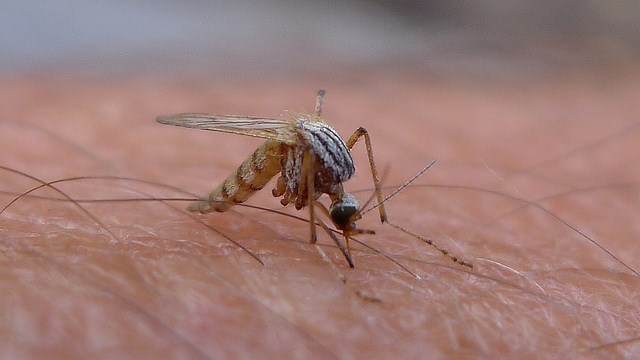With the weather getting warmer, the provincial government is asking residents to be aware of the risks of West Nile virus and take precautions in order to prevent transmission of the virus.
West Nile is a virus found in birds, which can then be spread to people when a mosquito (the main species that carries it is Culex tarsalis) bites an infected bird and then bites a person. The virus was introduced into North America in 1998 and Saskatchewan in 2002. Since then, it’s been in the province in varying degrees.
The CDC estimates that 70-80 per cent of people infected with West Nile virus won’t feel symptoms. About one in five develop a fever with accompanying symptoms such as vomiting, diarrhea, or a rash. People with these symptoms recover completely, though fatigue can linger for awhile. Less than one per cent of infected people develop a neurological disease.
“The majority of people who get West Nile Virus will not need medical attention and will improve on their own,” Saskatchewan’s Deputy Chief Medical Health Officer Dr. Denise Werker said in a news release. “However, a patient should see a doctor immediately if they develop serious symptoms like a persistent fever, neck stiffness, severe headaches, confusion, seizures or paralysis.”
Culex tarsalis lays eggs in ditches or sloughs where they get flooded in the spring with snow melt and hatch. They come out, eat and then lay eggs where they get flooded in the spring again and hatch.
“They can go for years - five, seven years - without getting flooded again and they’ll just be sitting there in the soil,” said Phil Curry, the province’s West Nile virus co-ordinator.
There can be several generations in a season. The numbers slowly build during the summer, reaching a peak in late July and early August – which is the time people are most at risk of West Nile.
“In a year like this, we’re starting to see as our general mosquito population declines, tarsalis is slowly increasing in numbers,” Curry said.
What this means is while the hot and dry weather is keeping mosquitoes away, Culex tarsalis is becoming a greater fraction of the overall mosquito population.
“This is the same situation we saw in 2003,” Curry said. “There were very few mosquitoes. It was a very dry year. People remarked how few mosquitoes were out, and yet we had dozens of human cases.”
The province does a weekly risk assessment of the virus and publishes it on the government website every Friday. Curry and others test mosquitoes for West Nile to see what the numbers are like. The number of infected mosquitoes is expected to increase in the next few weeks.
To help decrease the risk of West Nile, Curry advises people to wear repellants, cover up, wear long sleeves and pants, as well as closed-toe shoes. As well, individuals should eliminate any potential sources of water that may have mosquitoes develop in it, such as covering rain barrels, changing birdbath water once a week, etc.
“Any kind of container that can hold water for more than a week or two can be a potential source of these mosquitoes,” he said.
In addition, if your town or city has a mosquito control program, Curry asks that you support it.
“West Nile is here to stay in Saskatchewan. Some years are lower levels of activity than others,” he said.




